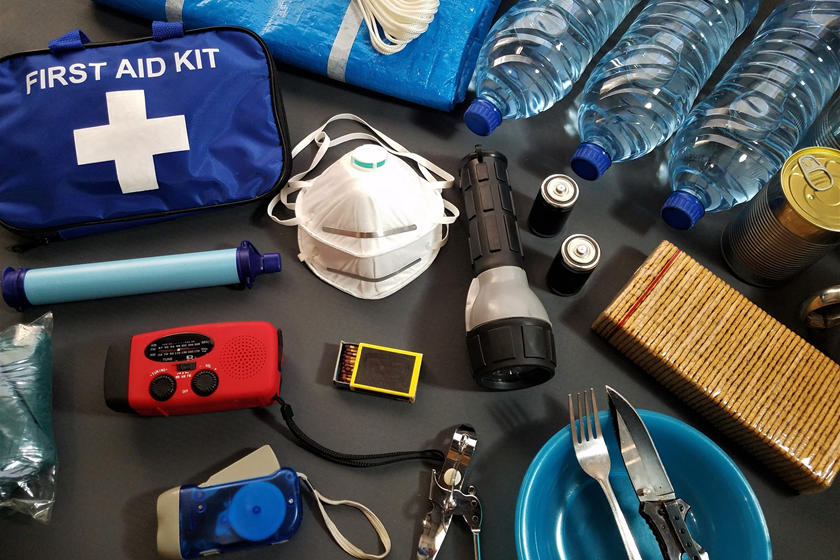But one automaker needs to make a change.
Picture this: there's a gas station, but the nozzles only fit Ford vehicles. Sounds ridiculous, right? So why does this exact situation exist in the United States, just with electric cars? We refer, of course, to the Tesla Supercharger network, which cannot be used by any non-Tesla electric vehicle. So if you don't own a Tesla, you're out of luck. Unlike any other charging network in the country, including Electrify America, EVGo, and ChargePoint - all of which work with Teslas - the proprietary Superchargers, all 1,315 of them, work with Tesla and only Tesla. This needs to change.
While spending a week driving a 2022 Polestar 2, we drove past the Supercharger station located just minutes away from our office and wondered why it's only usable by Tesla vehicles. The answer is a bit complicated but worth discussing. If Tesla truly wants to speed up EV adoption in the US, it needs to make Superchargers accessible to all.
Ford Mustang Mach-E or Kia EV6 drivers that try to use the Tesla Supercharger will discover that the charger simply won't fit.
In the US, every automaker (besides Tesla) uses a standardized SAE J1772 connector, also known as a J-plug, for Level 1 and Level 2 charging. For DC fast charging, also known as Level 3 charging, they use a Combined Charging System (CCS) connector with two additional pins to support faster charging. These connectors vary a bit based on where you live in the world, like CHAdeMO in Japan, but are more or less uniform based on region. Unless you have a Tesla, that is.
Despite every other automaker agreeing on a single charging standard, Tesla continues to use its proprietary connector. If you own a Tesla, you can plug in an adaptor to use CCS, but nothing exists to adapt a CCS car to use a Supercharger. This is similar to how Apple uses a proprietary Lightning connector for the iPhone, while every other smartphone now uses USB-C. But instead of a $20 cable, we're talking about billions of dollars in infrastructure.
Locking the largest charging network in the US to one brand stymies the push toward electrification. If owners of other EVs and PHEVs could access the Supercharger network, it would rapidly broaden their appeal to shoppers who simply can't afford a Tesla. As a reminder, the cheapest Model 3 available to order costs $48,490 with no tax credits available. Of course, we don't expect Tesla to let other vehicles crowd its stations without receiving compensation because that wouldn't be fair. Tesla could make rival automakers pay to use the network, and even charge a higher rate than native Tesla owners. It would be a win-win for Tesla and the EV movement.
Though Tesla has the most extensive charging network at the moment, companies like Electrify America are expanding quickly and could eventually grow to be the largest. With the federal government set to inject billions of dollars towards charging infrastructure, it makes more sense to invest in plugs that everyone (not just Tesla owners) can use. We wouldn't let Tesla have any federal funds until it changes its plugs.
Tesla CEO Elon Musk said he would open up the Superchargers to other automakers by the end of 2021, and to his credit, the company has done it, but only as a pilot in the Netherlands, France, and Norway. Not the US. Musk basically got the headline, but failed to actually do what he said: open the chargers to other brands in a meaningful way. Tesla may reportedly open some chargers in the UK, but nothing has happened officially. We'd reach out to Tesla for comment, but the company doesn't have a media department to field requests.
It's far easier for Tesla to open Superchargers in Europe because the company was already mandated to use the industry-standard CCS connector. In the US, the federal government has no such restriction, meaning the company continues to use its proprietary plug. Tesla would incur hefty costs to convert all of its chargers to CCS and the move would leave its owners with an outdated connector. Fortunately, as we've stated, it's easy to adapt a Tesla to use a CCS plug, so owners of current Tesla models would be fine. Tesla could just include adapters for the old cars at stations.
We'd love to see Tesla cater to industry standards and switch to CCS, but it's unreasonable to expect the Californian carmaker (despite its near $1 trillion valuation) to spend money on the problem. So we have another solution.
The federal government is investing in new charging stations, so why not spend some of that cash helping Tesla convert its chargers to CCS? Such a move would make public charging more available to drivers in the US quicker than building new stations and further Tesla's "mission to accelerate the world's transition to sustainable energy." If Tesla doesn't wish to comply, the US could mandate that all cars must come with the CCS connector, as other countries do.
Instead of rushing to build more expensive charging stations, let's work with what we have. Eliminating the only one-make refueling station in the world is a great start.









Join The Discussion